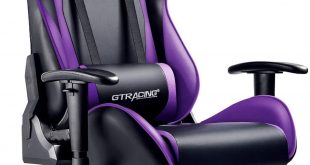
As far as naming conventions go, it doesn’t get much more on the nose than Amazon’s latest virtual assistant, the All New Echo Dot. Yes, it’s an Echo device, and yes, it’s All New. The question is, do the new improvements actually make the Echo Dot better? Or are we looking at this generation’s New Coke?
It would be remiss to talk about the Echo and not discuss the new shape – it’s the first thing you’ll notice compared to older models, so let’s get to that first. Continuing its unintentional sports theme, the Dot has now evolved from its previous form as a hockey puck shape, becoming more of a ball – albeit a slightly submerged one.
It’s also larger too, allowing more room to house a bigger speaker and the addition of dual tweeters, presuming you opt for the $100 dollar premium model, which is the one we tested. There’s also a cheaper model ($50) that lacks the tweeters and makes do with a smaller speaker, as well as forgoing some home hub features, but more on that later.
What Does the Amazon Echo Dot Do?
The Amazon Echo Dot is pitched as a virtual assistant, driven by Amazon’s own Alexa. Function-wise, it can do pretty much everything that a Google Home device (for example) can do. It’ll play music (Spotify, Apple Music, Amazon Music etc.), search the web, give a weather forecast, act as a timer, make calendar appointments, and so on, all done through voice activation.
Of course, as it’s an Amazon device, if you’re hooked into the Amazon infrastructure already, then you’ll get a lot more extra functionality out of it. Ordering goods via the online retail giant is as simple as asking your new tech ball friend to place it for you. It’ll even tell you when orders are due to arrive. There are some nice little quality of life touches here, too – for example, around certain holidays, the Echo will let you know that your order is on its way, but won’t actually say the name of the product out loud for fear of spoiling someone’s big surprise.
As with other Amazon devices, such as the Fire tablet, the Echo Dot has many child-friendly features, and also introduces Voice Profiles for Kids. Enabled, Alexa will automatically recognize requests and commands from the smaller people in the house and tailor its responses accordingly, swerving anything unsavory. This mode also allows children to call friends and family from an approved list.
In terms of what the All New Echo Dot can’t do, if you opt for the more basic model, a lack of built-in Zigbee hub means that it’s limited in terms of the devices it can connect to in your smart home setup. If you’re looking for this hub, the ‘Premium’ version of the Echo Dot – the one tested here – offers much more integration for those who are committed to the smart home life.
How Does the Echo Dot Sound?
One of the concerns about smaller voice assistants is the power and range of their internal speakers. Sure, it’s great being able to bark instructions at your gadgets, but if the sound coming out of them sounds like a bee trapped in a can, the magic quickly evaporates.
The Echo Dot handles audio remarkably well, and Alexa herself is clear and enunciates well when replying to your queries. There weren’t any instances of clipped words, or sentences running into each other, and for the most part, the responses felt very natural.
When it comes to playing music, this little ball isn’t going to replace your dedicated home theater setup, but it can produce a full enough sound for a blast of Spotify – and can be turned up rather loud, too. It would struggle to make itself heard at a house party, but we’re confident that if you turned up the volume to max, any adjoining neighbors would soon be letting you know their disapproval.
It’s worth noting that if sound quality is a major concern, you should opt for the premium model, as the two additional tweeters do a great job supporting the 3-inch speaker for a more rounded sound. The more basic model relies on the one 1.6-inch speaker alone.
What is the Echo Dot Like to Use?
One of the key aspects of any virtual assistant device is the ability to hear, and process, commands. If a device can’t do this, check its user record logs, and you’ll discover a long and colorful list of expletives that have been hurled at it. It is genuinely one of the most frustrating things to have to repeat ‘What is the weather like today?’ at increasing volume and with clearer pronunciation, only to be met with an answer about ice cream or the current Prime Minister of Poland.
In this regard, the Echo Dot is something of a revelation. During our testing, it understood our request almost every time, and when it didn’t, a second pass was all it needed. It’s also very good at picking up voices at normal speaking volume, and from an impressive distance, too. No need to shout at it like you’re communing with a bank teller through a perspex screen – the Dot can hear you, loud and clear, even if there’s background noise in the room.
The visual notifications are easy to spot too, without being too distracting. At the base of the Echo is a context sensitive light – activate the device with the awake word, ‘Alexa’, and a blue pulsing ring will appear to let you know it’s listening. Notifications are signaled with a yellow light.
Despite being voice activated, the Echo Dot features physical volume buttons. There’s also a mute button for the microphone, should you be paranoid about anyone listening in, or simply want some time to yourself without fear of Alexa piping up.
Amazon All-new Echo Dot Verdict
Whether or not you buy the Amazon Echo Dot depends on what you want from a virtual assistant. We can tell you that if you’re looking for a serious upgrade to your existing Echo Dot, or a powerful home DJ, then you might feel a little deflated.However, if you’re looking for a virtual assistant that can answer your daily queries (almost) every time, act as your personal shopper, and play your favorite Spotify tunes, then the Echo Dot is a good choice. Price-wise, it’s comparable to Google’s Home Mini, and the decision between the two is likely to come down to brand loyalty and the best fit for your home.
Amazon may have created a successor to the previous Dot that doesn’t exactly rip up the blueprint, outside of its design – but if it isn’t broke, why fix it?
 Richtheway.com Beauty, Digital, Fashion, Jewerly, Camera, Home.
Richtheway.com Beauty, Digital, Fashion, Jewerly, Camera, Home.


